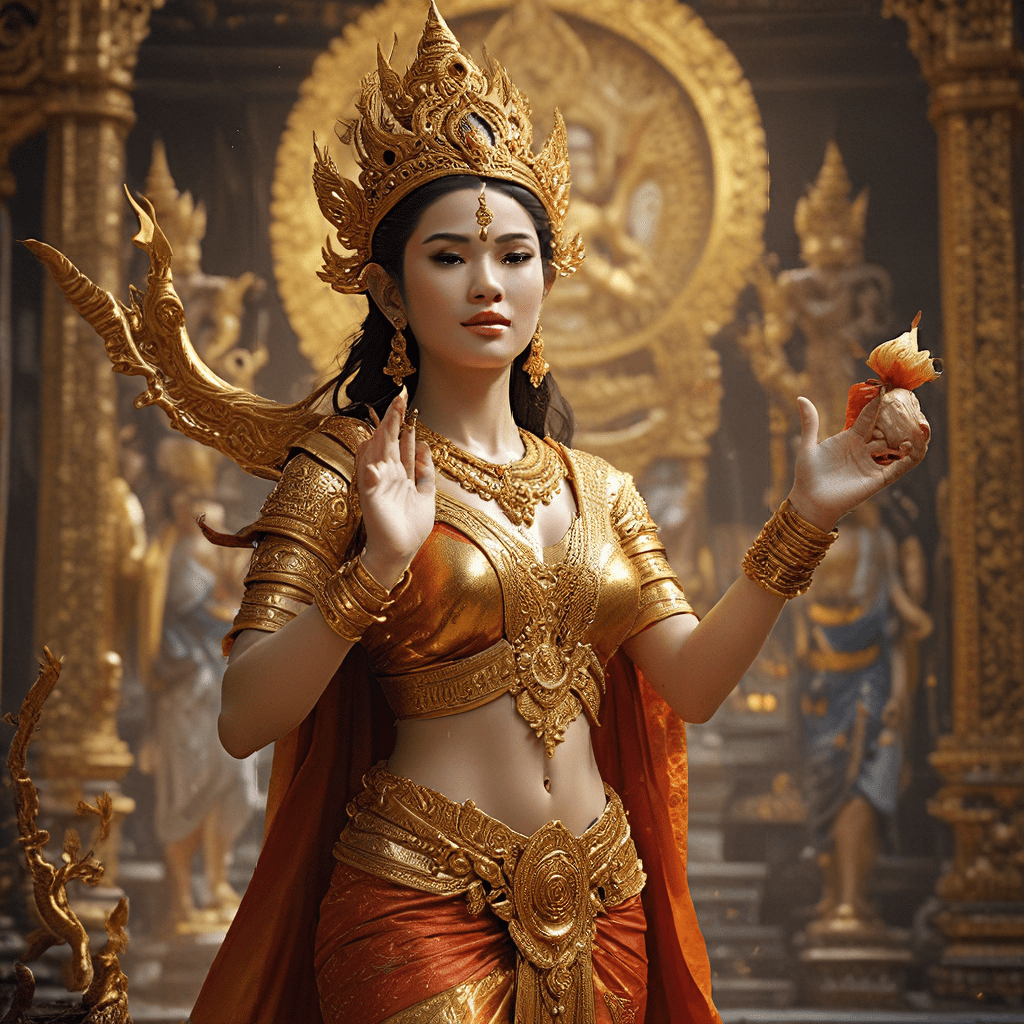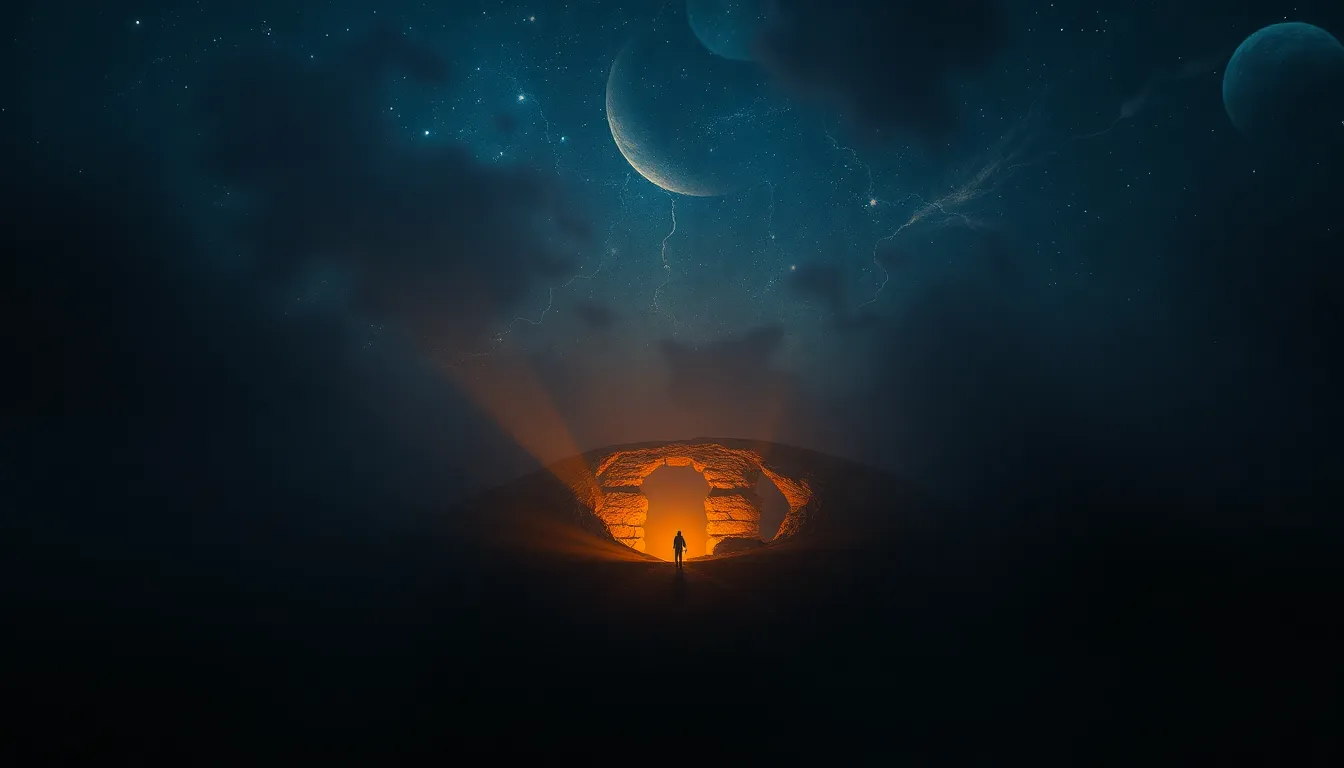Thai Mythology: A Tapestry of Gods and Goddesses
Thai mythology is a rich and vibrant tapestry woven from ancient beliefs, Hindu influences, and Buddhist teachings. It tells stories of powerful gods and goddesses, mythical creatures, and the origins of the world. These tales have been passed down through generations, shaping Thai culture, art, and literature.
The Origins of Thai Mythology
The origins of Thai mythology can be traced back to the ancient beliefs of the Tai people, who migrated to Southeast Asia from southern China. These beliefs were animistic, meaning that they believed in the presence of spirits in nature. These spirits inhabited forests, rivers, mountains, and even everyday objects. The Tai people revered these spirits and offered them sacrifices to appease them.
Over time, the Tai people came into contact with the Hindu and Buddhist cultures of India and Southeast Asia. These influences enriched their beliefs, leading to the development of a complex pantheon of gods and goddesses. The integration of Hindu and Buddhist teachings into Thai mythology resulted in a unique and multifaceted system of beliefs.
The Creator God: Brahma and the Cosmic Egg
In Thai mythology, Brahma is the creator god, responsible for bringing the universe into existence. The story of creation begins with a cosmic egg, similar to the concept of a world egg in other mythologies. This egg is said to have floated in the void for an eternity until Brahma emerged from it. Brahma then created the world, the heavens, and the earth, as well as the first humans.
Brahma is depicted as a four-headed being, representing his ability to perceive all directions and aspects of creation. He is often associated with the color white, symbolizing purity and creation.
The Trimurti: Brahma, Vishnu, and Shiva
The Trimurti is a central concept in Hindu mythology, and it is also prevalent in Thai mythology. It represents the three main deities who embody the fundamental aspects of the universe: creation, preservation, and destruction.
- Brahma, as discussed earlier, is the creator god, responsible for bringing life and order to the universe.
- Vishnu is the preserver god, responsible for maintaining the balance and harmony of the cosmos. He is often depicted as a blue-skinned figure, symbolizing the vastness of the ocean.
- Shiva is the destroyer god, responsible for ending cycles and ushering in new beginnings. He is often depicted with a third eye, symbolizing his ability to see beyond the illusions of the world.
The Pantheon of Gods and Goddesses
Beyond the Trimurti, Thai mythology boasts a diverse pantheon of gods and goddesses, who each have their own unique characteristics, domains, and stories. Some of the most prominent deities include:
- Indra: The king of the gods and the ruler of the heavenly realm, often associated with thunder and lightning.
- Yama: The god of death and the ruler of the underworld, responsible for judging the souls of the deceased.
- Lakshmi: The goddess of wealth, prosperity, and good fortune, often depicted with golden lotus flowers.
- Saraswati: The goddess of knowledge, music, and the arts, often depicted with a white swan.
- Ganesha: The elephant-headed god of wisdom, knowledge, and success, often depicted with a broken tusk.
These deities, along with many others, play important roles in Thai mythology, representing various aspects of human experience and the natural world.
The Heavenly Realm: Indra and the Devas
Indra, the king of the gods and ruler of the heavenly realm, is a pivotal figure in Thai mythology. His celestial palace, known as Tavatimsa, is located in the highest heaven, and it is here that Indra presides over the Devas, who are his celestial attendants. Indra is often depicted holding a thunderbolt, symbolizing his power over thunder and lightning.
These Devas, often referred to as "angels" or "celestial beings" are responsible for protecting the world and its inhabitants. They are said to have various abilities, including flight, teleportation, and the ability to control the elements.
The Underworld: Yama and the Ghosts
Yama, the god of death, rules over the underworld, known as Naraka. He is responsible for judging the souls of the deceased, determining their fate in the afterlife. His judgment is based on the deeds they committed during their lifetime. Those who have lived righteous lives are rewarded with rebirth in a higher realm, while those who have committed evil deeds are punished in Naraka.
The underworld, as depicted in Thai mythology, is a place of both suffering and hope. It is filled with ghosts and spirits, who are said to wander the earth, seeking to influence the lives of the living. Belief in these spirits and their influence is deeply ingrained in Thai culture.
The Role of Spirits and Nature Deities
Thai mythology places great importance on the role of spirits and nature deities. These beings, often known as "phi" in Thai, reside in the natural world, inhabiting forests, mountains, rivers, and even everyday objects. They are believed to possess powerful forces that can influence human lives.
These spirits may be benevolent, helpful spirits who offer protection, or they may be mischievous and vengeful spirits who bring misfortune. Respecting these spirits and offering them offerings is crucial in Thai tradition, as it is believed to appease them and avoid their wrath.
The Influence of Hinduism and Buddhism
The influence of Hinduism and Buddhism on Thai mythology is undeniable. Hindu concepts, such as the Trimurti, the idea of reincarnation, and karma, have been integrated into Thai beliefs, shaping the way they understand the world and their place in it.
Buddhist teachings, particularly the concept of enlightenment, have also deeply influenced Thai mythology. Buddhism emphasizes the importance of compassion, mindfulness, and ethical conduct, which are reflected in Thai stories and folklore.
Modern Interpretations and Adaptations of Thai Mythology
Thai mythology continues to be a source of inspiration for contemporary artists, writers, and filmmakers. Traditional tales are being reinterpreted and reimagined for modern audiences, finding new relevance in stories, films, and even video games.
For example, the epic Ramayana, one of the most important Hindu tales, is often adapted into Thai performing arts, such as shadow puppetry and traditional Thai dance. Modern interpretations of Thai mythology often reflect the changing cultural landscape and social issues of contemporary society.
FAQ
What are some of the most popular Thai myths?
Thai myths are numerous and varied, but some of the most well-known include the story of Sangthong, the tale of the White Elephant, and the legend of Phra Ruang. These stories provide insights into Thai cultural values, beliefs, and historical events.
What is the significance of Thai mythology?
Thai mythology is significant because it reflects the cultural identity of the Thai people. The stories and beliefs passed down through generations shape Thai art, literature, music, and even daily life. It helps to connect the Thai people to their history and traditions.
How does Thai mythology compare with other mythologies?
Thai mythology shares similarities with other mythologies around the world, such as the concept of a creator god, the existence of a pantheon of gods and goddesses, and the belief in spirits and the afterlife. However, Thai mythology also has its own unique features, shaped by its historical and cultural context.
How has Thai mythology changed over time?
Thai mythology has evolved over time, influenced by various factors, including interactions with other cultures, the spread of religious beliefs, and changing social norms. While some central beliefs remain, interpretations and adaptations have emerged to reflect the contemporary world.
What is the future of Thai mythology?
The future of Thai mythology seems bright. The stories and beliefs continue to be passed down through generations, and they find new expression in contemporary art, literature, and other forms of media. Thai mythology remains a vital part of Thai culture and identity, ensuring that its stories and lessons will continue to be told for years to come.

